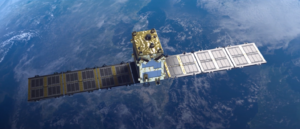Governments continue to dominate radar satellite data market
By Debra Werner

SAN FRANCISCO – Radar satellite operators continue to see the long-term promise of commercial markets and near-term demand from government customers, according to panelists speaking Nov. 10 at the virtual World Satellite Business Week conference.
“We do still believe in the commercial market but it’s not as mature as we would have hoped,” said Payam Banazadeh, Capella Space CEO and co-founder. “The market that we see in the near term is mostly the defense and intelligence market.”
Still, the commercial market is growing.
When Iceye began operating radar satellites, the company sold data and imagery primarily to government customers.
“I’m happy to say that this year we have seen a substantially faster increase on the commercial side,” said Rafal Modrzewski, Iceye CEO and co-founder.
Ursa Space Systems provides commercial and government customers with geospatial analytics drawn from multiple data sources including radar satellites.
“We focus a lot of our effort on expanding commercial markets into a number of different fields,” said Adam Maher, Ursa Space Systems CEO and founder.
Often, Ursa develops analytic products for commercial applications like maritime tracking and infrastructure monitoring that appeal to government customers as well.
“The government market takes a lot of things we develop commercially,” Maher said.
It’s difficult to estimate the size of the market for Synthetic Aperture Radar (SAR) data. Even the overall geospatial data market is hard to pin down.
Euroconsult’s forecast released in October said the global market for Earth-observation data and value-added services would grow from $4.6 billion in 2019 to $8 billion in 2029. The “growth is expected to be driven by a mix of defense and new commercial markets, supported by the arrival of new constellation operators with low-cost solutions,” according to Earth Observation Data and Services Market.
Other studies have predicted the future Earth-observation market could generate between $5 billion and $50 billion a year. In order to reach the higher numbers, potential customers will need to learn the value of geospatial data and how to apply it to their work, Maher added.
That education is happening.
When Ursa Space was founded in 2014, SAR data was not widely used in the oil and gas industry. Now, oil and gas companies as well as financial institutions often rely on SAR to answer questions and solve problems.
New industries are also recognizing the value of geospatial analytics, Maher said. “Over the last few months, we’ve been signing up a customer from a new market vertical every couple of weeks,” he added.
Synspective, a Japanese company that provides SAR data and analytics, is expanding its commercial customer base. Synspective works closely with customers working in the architecture, engineering and construction market as well as the financial market, said Motoyuki Arai, Synspective founder and CEO.
Still, Arai agrees, that the commercial market will grow when more people understand the value of SAR data, imagery and analytics.
“We have to educate the customers to understand how they can use SAR data in their operations,” Arai said. “Then we can expand the market together.”
November 11, 2020 at 12:47AM
via SpaceNews read more...

Post a Comment